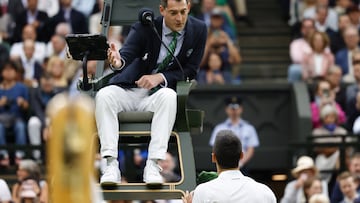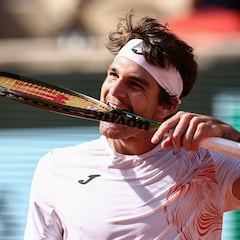What is hindrance in tennis? - how Djokovic lost a point against Sinner
The Serbian tennis star lost an unusal point in his Wimbledon Men’s Singles semi-final contest against Jannik Sinner.


Novak Djokovic has been playing tennis long enough to have a decent grasp of the rules at least. However, the Serb was penalised under the ‘hindrance’ rule in the second set of today’s semi-final.
Hindrance 🗣
— BBC Sport (@BBCSport) July 14, 2023
Time violation⏱️
Novak Djokovic v umpire Richard Haigh is an interesting subplot 👀#Wimbledon pic.twitter.com/P6tfzMDLtY
The 23-time Grand Slam winner was ajudged to have made a noise too late after he played a shot, as his Italian opponent Jannik Sinner was about to play a shot, with umpire Richard Haigh awarding the point to Sinner. Djokovic went on to win the game.
A breakdown of hinderances
Related stories
In tennis, a hindrance refers to any external interference or distraction that affects a player’s ability to make a shot or play the game.
Examples
- Audible distractions from outside forces
- Visual distractions from outside forces
- Deliberate distractions where a player intentionally tries to distract their opponent.
- Equipment malfunctions such as the net or the court surface, becomes a hindrance due to a malfunction or damage.
According to the International Tennis Federation (ITF) Rules of Tennis, if a hindrance occurs during a point, the point should be replayed, unless the hindrance was caused by the player or their team. In that case, the player who caused the hindrance would lose the point, as was the case with Djokovic.

